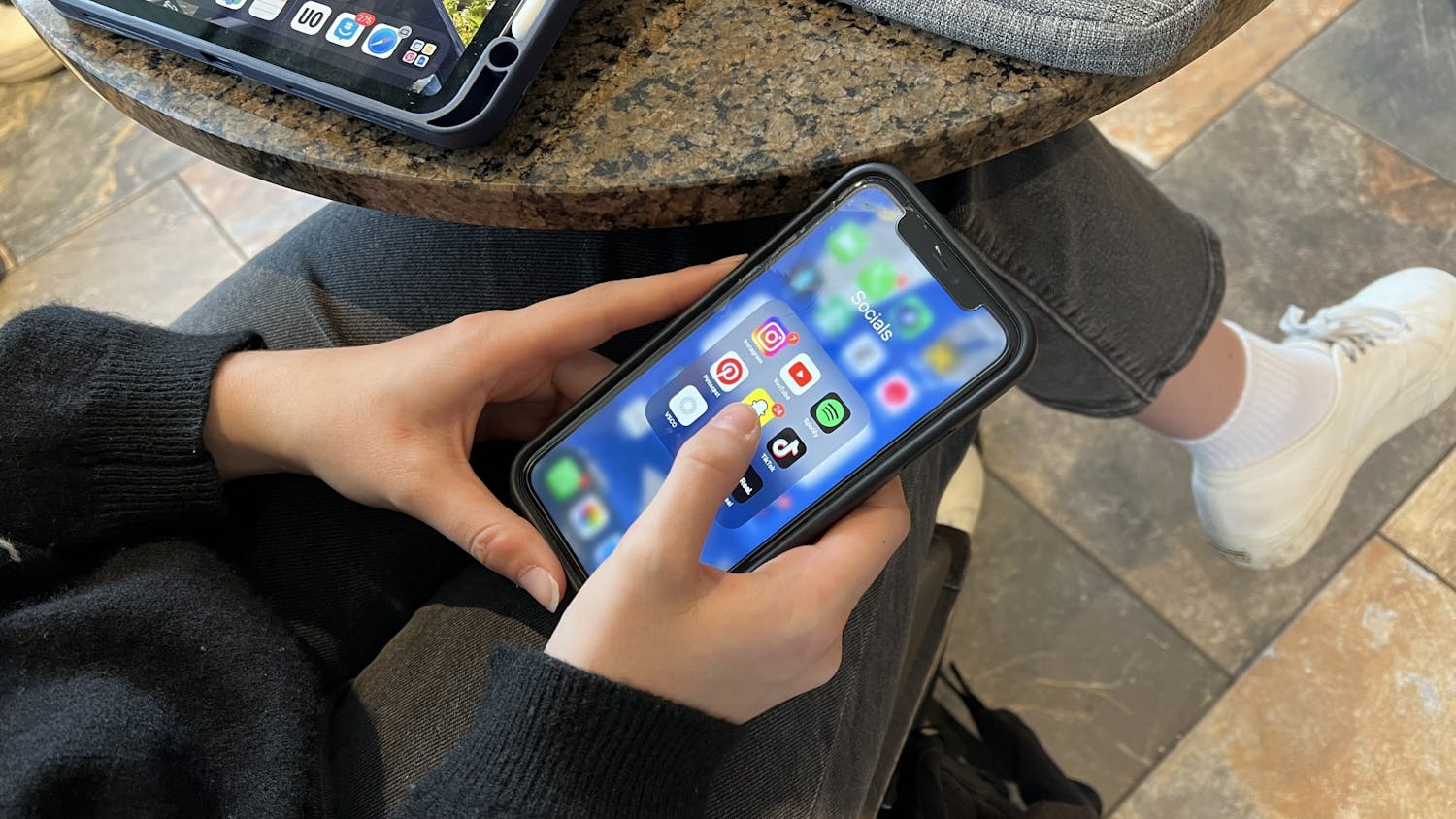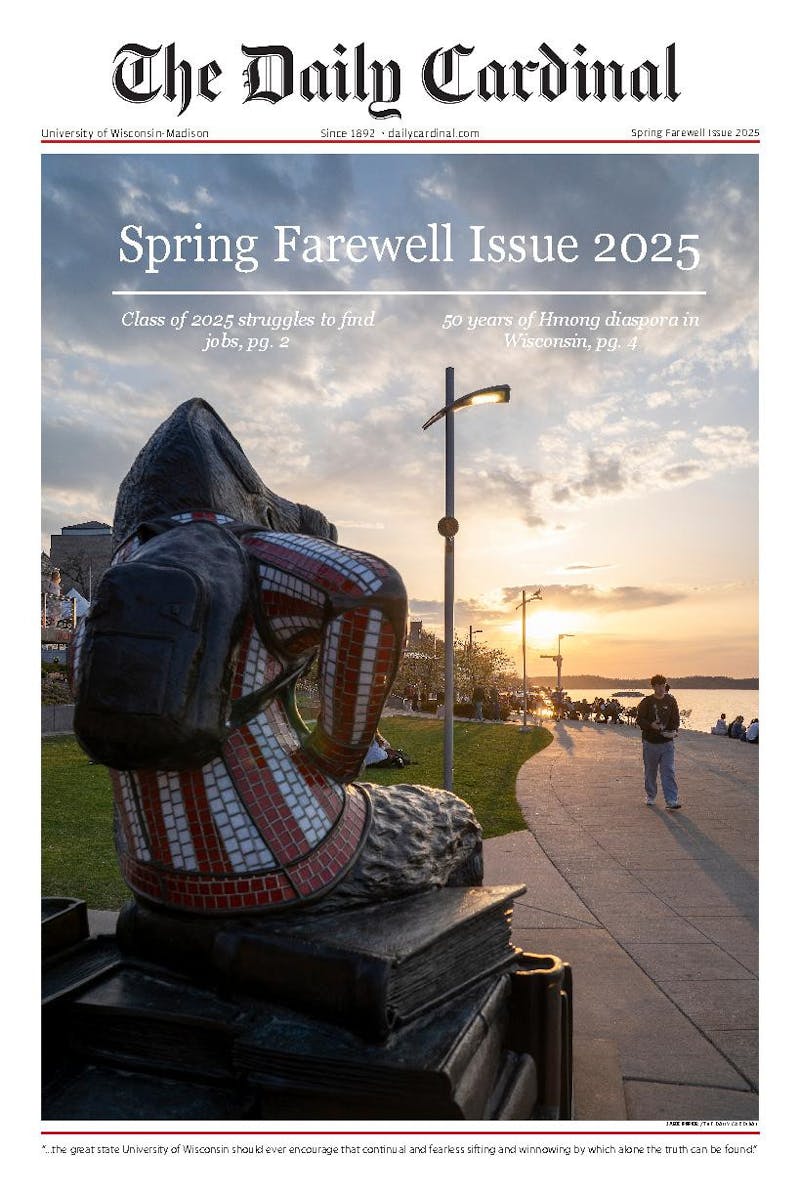This Feb. 14, could chocolate be a substitute for a real Valentine?
Still recuperating from a recent break-up, UW-Madison freshman Katy Williams admits that this Valentine's Day, \chocolate may be my solace in a time of sorrow."" She'll buy it for herself if she has to, but says, ""I am still hoping for someone to surprise me with it.""
How is it possible that a gift of chocolate has become synonymous with an expression of love? Chocolate is in the spotlight now more than ever with Valentine's Day approaching, and is portrayed as anything from part of a healthful diet to a plague on American's waistlines; however, the true qualities of this crave-inducing sweet are often surrounded by myths.
So, what is chocolate, really? It all starts with cocoa beans. The seeds grown in the fruit of the tropical cacao tree. Christopher Columbus brought the misspelled cocoa beans back to Europe in the early 1600s. Ever since, chocolate has evolved into what it is known and loved as today.
Richard Hartel, UW-Madison researcher and professor of food science, explains more about the cocoa bean. The natural main fat of the bean, cocoa butter, is unique due to its melting point. It exists as a solid at a room temperature, but immediately melts upon entering one's mouth. Hartel goes on to say cocoa butter shouldn't be considered a bad fat in terms of heart disease. However, he cautions this doesn't make chocolate healthful. It is still loaded with fat and sugar and can easily lead to a caloric overdose.
As far as basic ingredients go, chocolate isn't as complex as one might imagine. Cocoa beans are first ground and roasted to develop flavor, a process Hartel notes as very similar to that of a coffee bean. Next, the ground beans or ""chocolate liquor"" are mixed with sugar, even more cocoa butter and an emulsifier to help bind everything together. It is then cooled properly so the cocoa butter crystallizes in just the right way. Structurally, Hartel relates chocolate to concrete; it resembles a bunch of particles stuck together by a little bit of liquid fat.
Chocolate has earned its place in scientific research not for its ingredients, but for the 300 known naturally-occurring chemicals of the cocoa bean. The International Cocoa Organization (ICCO) says researchers interested in chocolate have shifted their focus specifically to mood-enhancing chemicals found in both the brain and chocolate. ICCO believes a decrease in serotonin, a chemical thought to promote relaxation, may lead to cravings for sweets such as chocolate. Endorphins, other feel-good chemicals, are believed to be controlled by dietary fat, so eating chocolate laden with cocoa butter will increase their output in the brain. The consumed chemicals may trick the brain into producing less than normal quantities on its own, leaving a person desiring even more chocolate once the effects have worn off.
While chocolate contains a number of these significant chemicals, most are found in trivial quantities. Matt Andrzejewski, research fellow of psychiatry for UW-Medical School, believes the true appeal of chocolate lies mainly in the fat and sugar. He suggests that while chocolate contains many psychoactive compounds, they are found in such low levels they pose far fewer dangers than the excess fat and sugar. He acknowledges the validity of current research, but is quick to point out ""the devil is in the details."" Scientists just don't know enough about how the brain processes many chemicals and can't produce solid conclusions. On the other hand, he admits, ""There's nothing that tastes quite like chocolate. There's something special about it.""
Emerging research has found chemicals in chocolate that mimic the brain fat anandamine. According to Nature, this anandamine-like compound may ""heighten sensitivity and produce euphoria."" Interestingly, THC, the active chemical in marijuana, affects the same part of the brain as anandamine and produces similar effects. Andrzejewski points out these chemical receptors are only in the brain and the stomach; this signals possible explanations for both the ""craving"" of chocolate and the ""munchies"" that accompany marijuana usage.
Chocolate has long been considered an aphrodisiac, a substance, according to the FDA, ""promoters claim can arouse or increase sexual desire, or libido."" Chocolate contains low levels of stimulants, but many of its desirable effects may simply stem from society's attitude toward it. If a person believes chocolate is forbidden, it is only natural for it to be even more satisfying. Either way, it is easy to understand how chocolate and Valentine's Day have become natural complements.
But don't think too hard about chocolate-just indulge! This fun dessert includes strawberries, well-known aphrodisiacs, and chocolate, providing double the sensory stimulation in a budget-friendly and simple recipe. Consider surprising your Valentine with this sensual treat, or set aside time to make this tasty combination with a friend or someone special. Enjoy!
Chocolate-Dipped Strawberries
Ingredients:
6 oz. semi-sweet chocolate chips
2 tbsp. unsalted butter
1 pt. fresh strawberries, washed & dried
Directions: Line a cookie sheet with wax paper. Microwave the chocolate chips and butter on medium for two minutes, then stir to combine. Continue microwaving until completely melted.
Partially dip the strawberries. Remove then place berries, hull side down, on wax paper lined cookie sheet. Refrigerate before serving. (Recipe provided by Cooks.com).





